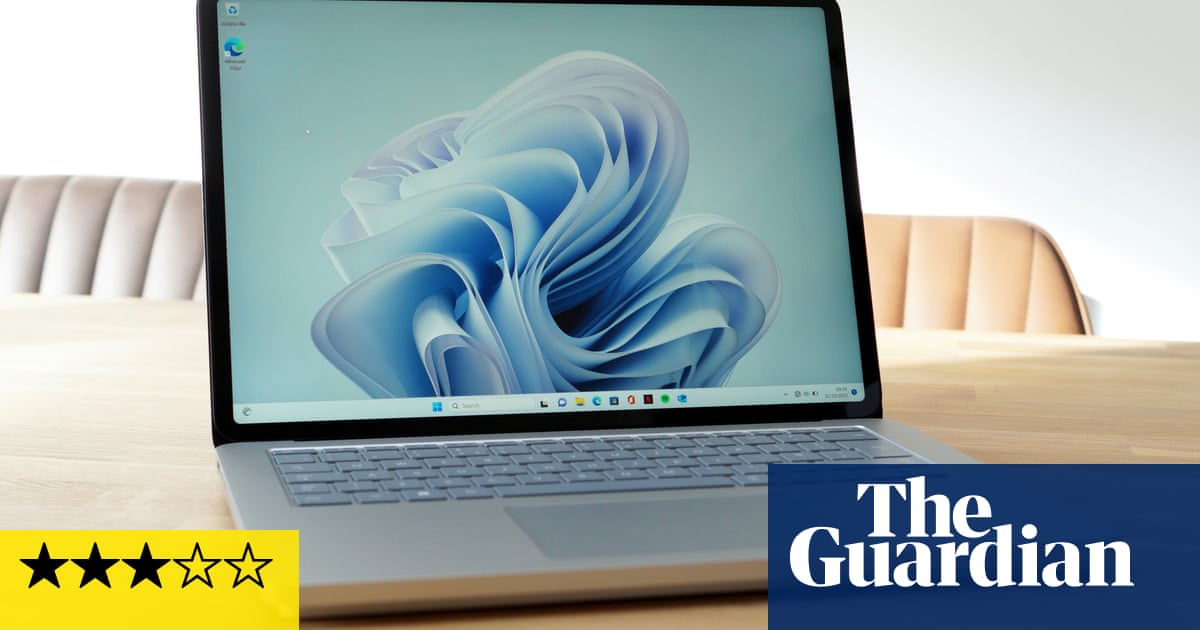
The Surface Laptop Go is Microsoft’s attempt to bring the best features of its premium machines to the mid-range PC market – but with a few corners cut.
Starting at £549, it comes in below the £999 Surface Laptop 3 and £799 Surface Pro 7, but above the £399 Surface Go 2 tablet.
It has a tempting starting price, but the cheapest model ships with just 64GB of – much slower – eMMC storage. So in effect, to get a model with adequate storage, you will have to shell out £699 for a machine with 128GB of traditional SSD storage.
From the outside the Laptop Go is a pretty convincing facsimile of the excellent Laptop 3. It is slightly smaller with the same smooth metal lid, but the rest of the body is plastic, not aluminium. It feels solidly built and the keyboard deck is metallic.
The keyboard is slightly smaller and the keys are not backlit, but it has an equally good typing experience. The trackpad is large and precise, making it one of the best you can get on a Windows machine.
The LCD screen is slightly smaller at 12.4in (versus 13.5in) and while good looking, it is noticeably less crisp than the higher resolution Laptop 3 and some rivals. If you’re used to the pin-sharp screens of premium laptops it will be a disappointment.
Specifications
Screen: 12.4in LCD 1536 x 1024 (148 PPI)
Processor: quad-core Intel Core i5-1035G1 (10th generation)
RAM: 4 or 8GB
Storage: 64GB eMMC or 128GB/256GB SSD
Graphics: Intel UHD
Operating system: Windows 10 Home in S mode
Camera: 720P front-facing
Connectivity: wifi 6 (ax), Bluetooth 5, USB-A, USB-C, headphones, Surface Connect, fingerprint sensor
Dimensions: 278.18 x 205.67 x 15.69 mm
Weight: 1,110g
Weak battery life
The Laptop Go ships with just one choice of processor, the 10th-generation Intel Core i5-1035G1 and a choice of 4 or 8GB of RAM, depending on the version. The model we tested had 8GB of RAM and 256GB of SSD storage.
The processor is similar to the Core i5 chips used in the Laptop 3 but with weaker graphics performance. The laptop is generally snappy, handling most tasks easily with similar performance to rivals, but note that the Intel chip is last-generation, not the current 11th-generation. It also runs hot, meaning the fans were frequently audible and the bottom became noticeably warm, particularly when updating.
Battery life is disappointing, however. The Laptop Go lasts just over seven hours when used in Windows 10 S Mode – which restricts what you can install – and just over six when in normal Windows 10 Home, with a few more apps not available in the Microsoft Store installed. That was while using Google Chrome with four tabs open, Evernote, Windows Mail, NextGen Reader, Typora and several messaging apps.
The Laptop 3 lasts more than eight hours while Apple’s MacBook Air lasts more than 16 hours under similar conditions.
Fully charging the Laptop Go with the included 39W Surface Connect power adaptor took 2 hours 15 minutes from dead, hitting 70% in a little over an hour. It can also be charged via USB-C with a third-party charger.
Sustainability
Microsoft does not provide an estimate for the expected number of full-charge cycles from the Laptop Go’s battery, which is typically 500 while maintaining at least 80% capacity for other laptop batteries. The battery is not user replaceable. Repairs must be performed by authorised service providers. The out-of-warranty service fee for the Laptop Go from Microsoft is £343.20 regardless of what is wrong.
The base of the Laptop Go contains 30% post-consumer recycled plastic. Microsoft operates recycling schemes for old machines. It also publishes a company-wide sustainability report and a breakdown of each product’s environmental impact.
Windows 10 Home in S mode
The Laptop Go ships with Windows 10 Home in S mode, which restricts what you can install to apps from the Microsoft Store. Many more apps are available from the Microsoft Store, so some may be tempted to leave it in S mode.
But if, like me, you need tools such as Google Chrome, you’ll need to switch to the standard Windows 10 Home experience, which takes just a few clicks in the Microsoft Store.
Windows 10 on the Laptop Go runs just like any other Surface, which is typically a good, bloat- and trialware-free experience. I’ve had fewer issues with Windows on Microsoft laptops than any other Windows 10 devices, but in this instance I saw tearing issues – where irritating artefacts appear on screen as you scroll – while reading various web pages in Edge and Chrome replicated on two different models.
I also had major issues getting my work Google Workspace email to function properly in Windows 10 Mail and Calendar. At first it would not sync the account at all. After an update to the Mail app it would sync but would routinely crash requiring a reboot of the computer. Microsoft support could not diagnose the problem, and officially said that it does not support Google Workspace, only the consumer Gmail. The infuriating issue was not isolated to the Laptop Go, nor my particular account, but all current Windows 10 machines that I had access to and all new instances of the Mail app.
Observations
The speakers are a bit tinny.
The webcam is ok, but not as good as the Surface Laptop 3.
It can be difficult to get the power connector to fit properly without lifting the laptop due to the angle of its side.
Price
The Microsoft Surface Laptop Go costs £549 with 4GB of RAM and 64GB of eMMC storage. Models with faster SSD storage and 8GB of RAM cost £699 with 128GB or £899 with 256GB of storage.
For comparison the Surface Laptop 3 costs £999, the Surface Book 3 costs £1,599, the Surface Pro 7 costs £799 and the Surface Go 2 costs £399.
Dell’s XPS 13 starts at £899 and Apple’s MacBook Air costs £999.
Verdict
Microsoft has a really good lower-cost Windows 10 laptop in it, but unfortunately the Surface Laptop Go isn’t quite it.
It has many of the right elements: a great keyboard, good trackpad, nice look and reasonable performance. But it also runs hot, has weak battery life, software issues and really isn’t that cheap.
The entry model costing £549 has only 64GB of slow eMMC storage, 4GB of RAM and no fingerprint scanner. It should be avoided, which means the real starting cost is £699 with the model tested costing £899. Given the Surface Laptop 3 is frequently discounted by Microsoft to £899 or less, which is a substantially better machine, the Laptop Go is caught between not being good enough and not being cheap enough.
The Surface Laptop Go isn’t a bad machine by any stretch, it’s just not that good either, which is a real shame.
Pros: solid performance, good keyboard and trackpad, fingerprint scanner in mid-or-high model, USB-C, nice look, solid build, recycled plastic.
Cons: weak battery life, runs hot, no backlit keys, screen not that crisp and not 1080p HD, not that much cheaper than premium machines, software niggles.












